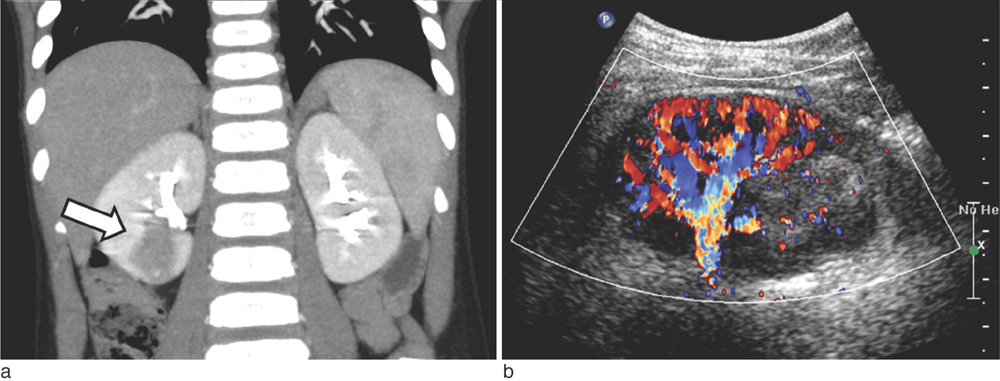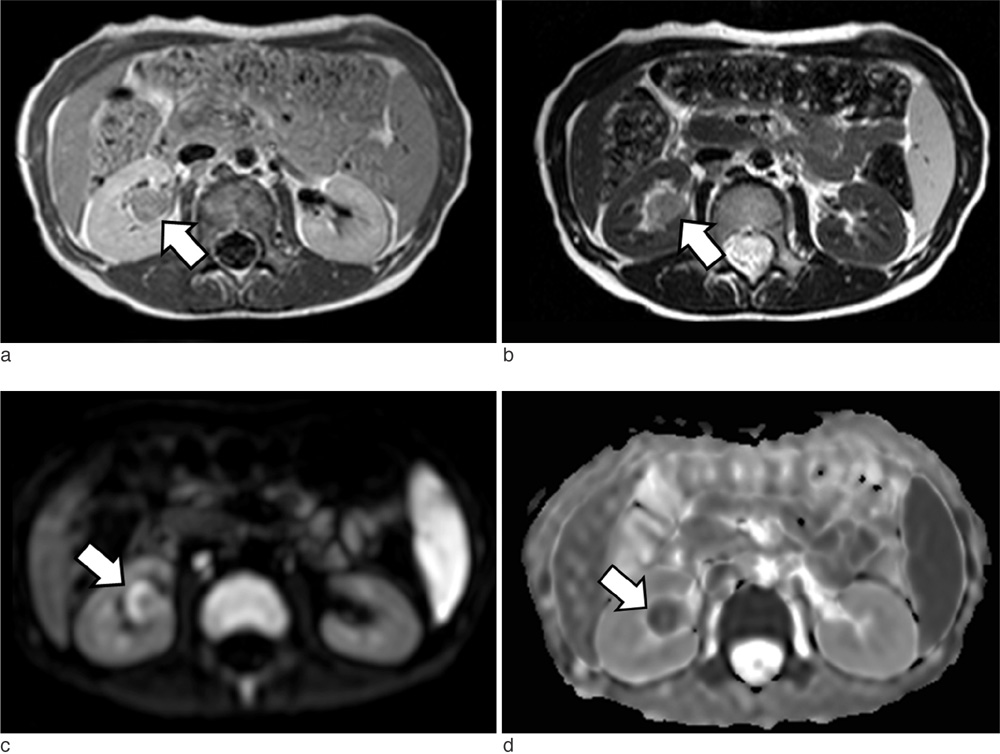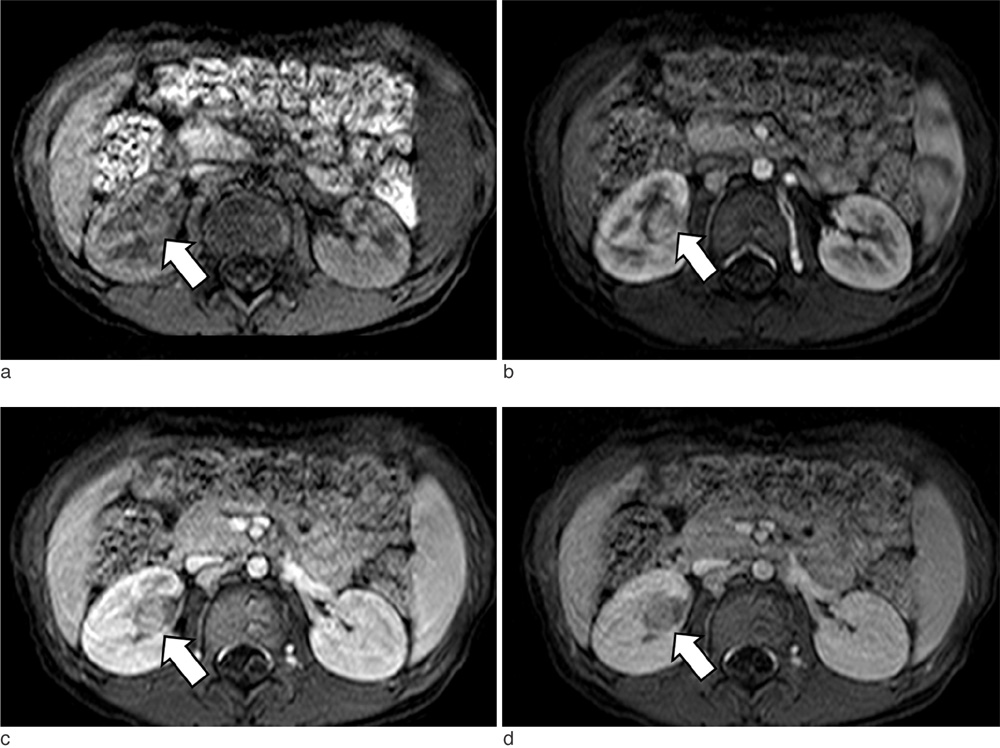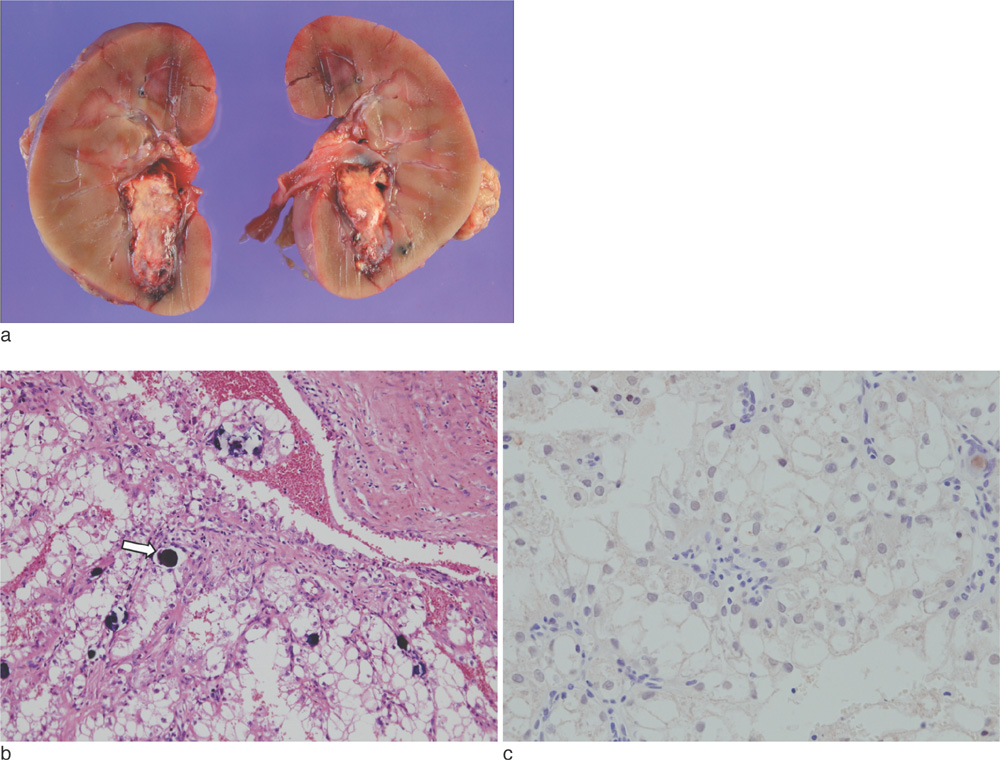J Korean Soc Magn Reson Med.
2013 Mar;17(1):41-46. 10.13104/jksmrm.2013.17.1.41.
Imaging Findings of Renal Cell Carcinoma Associated with Xp11.2 Translocation/TFE3 Gene Fusion in a 4-Year-Old Male: Case Report and Review of Literature
- Affiliations
-
- 1Department of Radiology and Research Institute of Radiological Science, Severance Children's Hospital, Yonsei University, College of Medicine, Korea. mjkim@yuhs.ac
- 2Department of Pathology, Severance Hospital, Yonsei University, College of Medicine, Korea.
- 3Department of Pediatric Urology, Severance Children's Hospital, Yonsei University, College of Medicine, Korea.
- KMID: 1426750
- DOI: http://doi.org/10.13104/jksmrm.2013.17.1.41
Abstract
- We represent a pathologically proven case of a four-year-old male patient with renal cell carcinoma associated with Xp11.2 translocation/TFE3 gene fusion, which is rare but more frequent in children or young adults. Computed tomography showed about 2.5 cm size ill-defined mass in the right kidney. The mass was hyperechoic on ultrasound. Magnetic resonance imaging demonstrated a mass with capsular enhancement and diffusion restriction. We present a case of Xp11.2 renal cell carcinoma and provide review of the literature.
MeSH Terms
Figure
Reference
-
1. Ross H, Argani P. Xp11 translocation renal cell carcinoma. Pathology. 2010; 42:369–373.2. Geller E, Smergel EM, Lowry PA. Renal neoplasms of childhood. Radiol Clin North Am. 1997; 35:1391–1413.3. Dehner LP, Leestma JE, Price EB Jr. Renal cell carcinoma in children: a clinicopathologic study of 15 cases and review of the literature. J Pediatr. 1970; 76:358–368.4. Hartman DS, Davis CJ Jr, Madewell JE, Friedman AC. Primary malignant renal tumors in the second decade of life: wilms tumor versus renal cell carcinoma. J Urol. 1982; 127:888–891.5. Bruder E, Passera O, Harms D, et al. Morphologic and molecular characterization of renal cell carcinoma in children and young adults. Am J Surg Pathol. 2004; 28:1117–1132.6. Argani P, Olgac S, Tickoo SK, et al. Xp11 translocation renal cell carcinoma in adults: expanded clinical, pathologic, and genetic spectrum. Am J Surg Pathol. 2007; 31:1149–1160.7. Dal Cin P, Stas M, Sciot R, De Wever I, Van Damme B, Van den Berghe H. Translocation (X; 1) reveals metastasis 31 years after renal cell carcinoma. Cancer Genet Cytogenet. 1998; 101:58–61.8. Yamaguchi T, Kuroda N, Imamura Y, Hes O, Kawada T, Nakayama K. Imprint cytologic features in renal cell carcinoma associated with Xp11.2 translocation/TFE3 gene fusion in an adult: a case report. Acta Cytol. 2009; 53:693–697.9. Kato H, Kanematsu M, Yokoi S, et al. Renal cell carcinoma associated with Xp11.2 translocation/TFE3 gene fusion: radiological findings mimicking papillary subtype. J Magn Reson Imaging. 2011; 33:217–220.10. Jayasinghe C, Siegler N, Leuschner I, Fleischhack G, Born M, Muller AM. Renal cell carcinoma with Xp11.2 translocation in a 7-year-old boy. Klin Padiatr. 2010; 222:187–189.11. Winarti NW, Argani P, De Marzo AM, Hicks J, Mulyadi K. Pediatric renal cell carcinoma associated with Xp11.2 translocation/TFE3 gene fusion. Int J Surg Pathol. 2008; 16:66–72.12. Argani P, Lae M, Ballard ET, et al. Translocation carcinomas of the kidney after chemotherapy in childhood. J Clin Oncol. 2006; 24:1529–1534.13. Wu A, Kunju LP, Cheng L, Shah RB. Renal cell carcinoma in children and young adults: analysis of clinicopathological, immunohistochemical and molecular characteristics with an emphasis on the spectrum of Xp11.2 translocation-associated and unusual clear cell subtypes. Histopathology. 2008; 53:533–544.14. Qiu R, Bing G, Zhou XJ. Xp11.2 Translocation renal cell carcinomas have a poorer prognosis than non-Xp11.2 translocation carcinomas in children and young adults: a meta-analysis. Int J Surg Pathol. 2010; 18:458–464.
- Full Text Links
- Actions
-
Cited
- CITED
-
- Close
- Share
- Similar articles
-
- Renal Cell Carcinoma Associated with Xp11.2 Translocation: Clinicopathologic and Immunohistochemical Findings of 4 Cases
- Papillary Renal Cell Carcinoma in Transplanted Kidney and Xp11.2 Translocation/ Transcription Factor E3-Rearranged Renal Cell Carcinoma in the Native Kidney: A Case Report
- Clinicopathological features of Xp11.2 translocation renal cell carcinoma
- Translocation Renal Cell Carcinoma t(6;11)(p21;q12) and Sickle Cell Anemia: First Report and Review of the Literature
- TFE3-Expressing Perivascular Epithelioid Cell Tumor of the Breast





